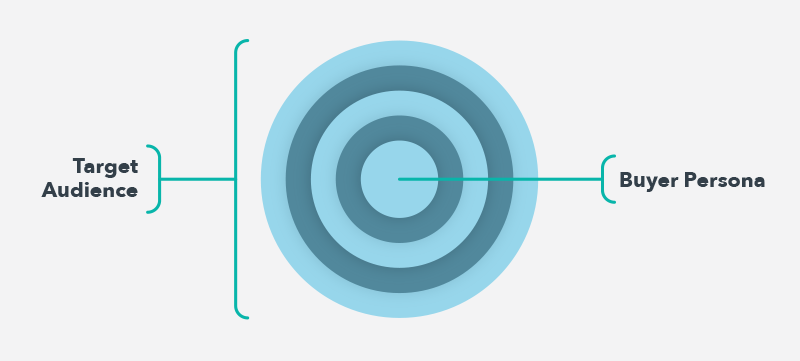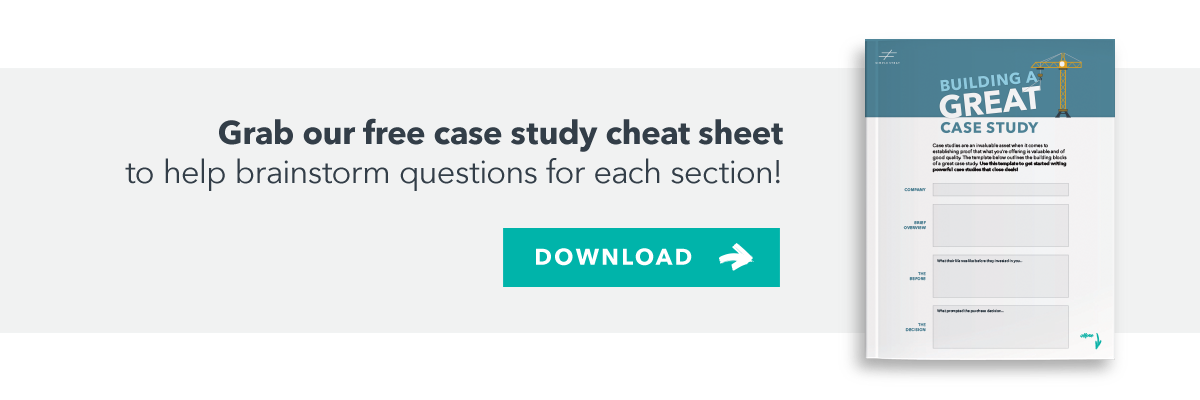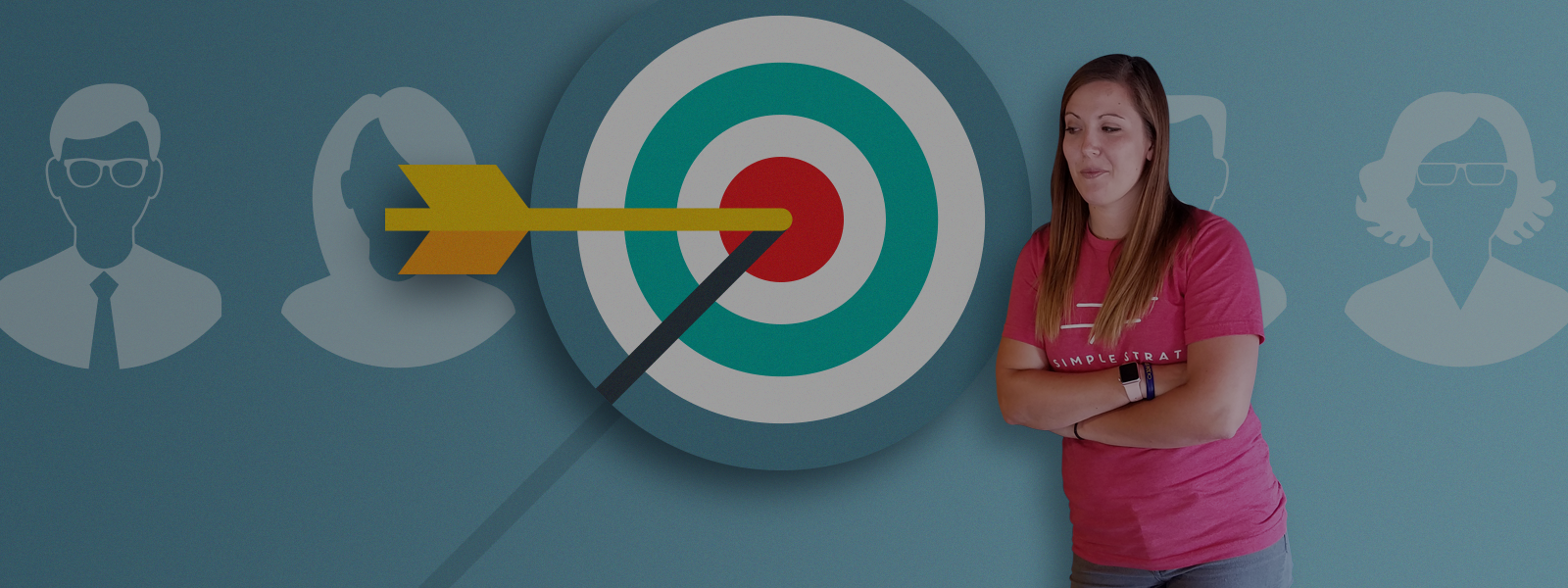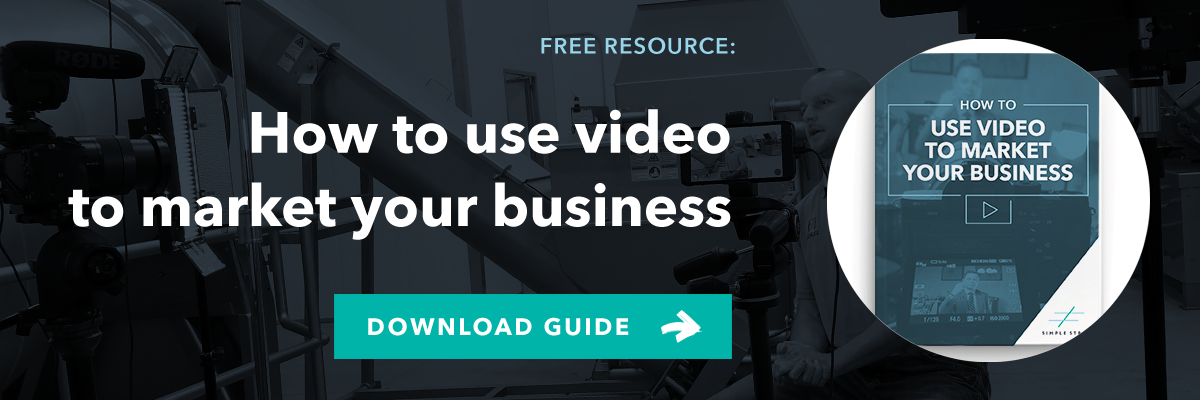As marketers, our lives get easier when we know more about our ideal customers. The more we know about them, the easier it is to communicate with them, offer value to them, and sell our products and services to them.
Buyer personas are an awesome tool for ensuring that we have all the information we need, and organizing that information in a way that's easy to understand. Essentially, buyer personas are characters that we make up, based on what we know about our ideal customers.
When we first have a conversation with a company about buyer personas, their mind often jumps to their target markets. But target markets and buyer personas are two different tools you need in your arsenal. Whereas target markets describe a range of people or businesses you would like to reach, buyer personas are extremely specific.
We like to think of target markets as literal targets, and the buyer personas as the bullseye of that target. While your target markets will describe many people, your buyer personas describe a specific, semi-fictional person.
In fact, there may not be any one real person who has all the traits of your buyer persona. But, if you build your buyer personas well and aim for that bullseye, you'll have a much better chance of creating messages that resonate with your ideal customers that are similar to the personas you create.
How Do I Use Buyer Personas?
Buyer personas are valuable assets for your organization to have for your sales and customer service teams, in addition to your marketing team. Buyer personas help everyone in your organization stay on the same page. Strong personas improve marketing and sales results too, from creating a finely targeted content funnel to running a high-converting sales sequence.
With detailed personas, your teams in marketing, sales, and customer service can better understand who they are communicating with and how to approach the interactions. Here's how:
How do buyer personas help marketing?
Marketers can create better content when they have a clear vision of their reader. As they write blog articles, host podcasts, build-out email campaigns, and craft lean nurturing sequences with a clear vision of the challenges and personality of the target persona, the message is more likely to resonate.
How do buyer personas help sales?
Sales team members can identify a prospect's challenges more quickly through the use of personas. Before they even pick up the phone, a sales person can have a vision of how to direct their questions. By asking the right questions, the salesperson can quickly identify the solution to address the prospect's challenge(s), move them more quickly through deal stages, and shorten the buying process.
How do buyer personas help customer service?
The customer service team can respond to service requests more efficiently with a clear understanding of the customer's needs. By using a common language to refer to personas, customer service team members can improve communication with other areas of the company as they seek to solve customer problems.
Pro tip: In addition to creating buyer personas for your ideal customers, consider building negative personas as well. These describe the types of people who you do not want to work with. They're great to have as you qualify your leads, and they're super helpful when you're segmenting your database. 
How To Create Buyer Personas
The best way to start building buyer personas is to map out the types of people that you interact with as you sell your products or services.
Start with your target markets, because you'll typically have at least one buyer persona for each market.
Next, you need to get more specific. If you're a B2B company, think about all the different job roles that you may need to interact with to make the sale. For example, if your target market is manufacturing companies with more than $10 million in annual revenues within 100 miles of your location, your personas might be for the CEOs in those companies, whatever role in the company that will actually use your products, and a role in the company that will need to be involved with implementing the product.
If you're a B2C company with a target market of moms between the ages of 30 and 45, you might have different personas for stay-at-home moms and working moms or moms with one child and moms with multiple children.
Make sure that your personas are specific but different from one another in ways that matter for your products or services. For example, if you serve multiple industries and the CEOs for those industries all act pretty much the same and have the same goals and challenges, there may not be a need to create separate CEO personas for each industry.
Once you have your personas identified, start by writing down everything you know about them. Filling out the list of persona expert questions that can be found later in this article is a great place to start.
Then, you'll need to conduct two types of interviews.
The first is what we call persona expert interviews. These are interviews with the people in your organization who regularly interact with customers. They will likely be from your sales and/or customer service department. These people will generally be able to answer questions about multiple personas.
You may find that there are some major gaps in their knowledge - that's totally normal and is a great example of why you need personas in the first place. Make sure you let them know that it's okay if they don't know the answer, you don't want them to give you a wild guess just because they're embarrassed.
The second set of interviews will be with current or former customers who most closely resemble the personas you've identified. You don't need to do a whole bunch of interviews for each persona, one to three is usually plenty to start off with.
Buyer Persona Interview Questions
The lists of questions below were designed for B2B companies. If you're selling to consumers, simply remove mentions of work and job roles (unless it's still relevant to your products or services).
Persona Expert Interview Questions
Use these questions for the interviews with people in your organization that frequently interact with customers.
- How would this persona describe himself/herself when meeting someone new? (Their personal "elevator introduction")
- What are they in charge of or expected to manage (at work)?
- Who are the peers, subordinates, superiors, and outsiders with whom they frequently interact?
- What is their number one goal at work?
- What other professional goals do they have?
- How do they measure success? (What metrics do they watch most closely?)
- How are they evaluated?
- What is their number one challenge at work?
- What other professional challenges do they have?
- Which of these challenges does your product/service help them solve?
- When they come up against any of these challenges, what might be some things they would ask a mentor or research on the internet as they try to solve them? (Brainstorm with them, try to push for as many as possible)
- What external issues or trends might inhibit them from reaching their goals?
- What are they doing now to address the goal or challenge that your product/service could help them with?
- What are some other things they could do? (Avoid talking about competing companies, instead discuss alternative methods - software vs spreadsheets, not Buffer vs Hootsuite)
- What would cause them to change what they're currently doing? (ie. faster, cheaper, easier, more secure, etc.)
- What would cause them to stay with the status quo, even if they're not happy with it? (ie. budget, boss is old fashioned, compliance issues, etc. )
- What might be some things they would ask when considering changing their current method or when evaluating different methods? (Stay focused on the method, not their specific company or product. Brainstorm with them and push for as many as possible.)
- When someone is evaluating your product/service vs. a competitor's, what are some things they might ask, research, or need to know? (Brainstorm with them and push for as many as possible.)
- What are 5 common objections that this persona raises in the sales process?
- Are there any other questions that customers have asked you more than once?
Persona Interview Questions
Use these questions for the interviews with current or former customers.
- What are you in charge of or expected to manage?
- What is your number one goal at work?
- What other goals do you have?
- How do you measure success? (What metrics do you watch most closely?)
- What is your number one challenge at work?
- What other challenges do you have?
- What external issues or trends might inhibit you from reaching your goals?
- What strategies and initiatives are you using to reach your goals and overcome your challenges?
- How hard is it for your organization to change or adopt new strategies or initiatives? Why?
- What are your favorite things about <COMPANY/PRODUCT>?
- What are some things that could be improved about <COMPANY/PRODUCT>?
- Tell me a little about how you came to the decision to buy <COMPANY/PRODUCT>? (What factored into your decision?)
- Tell me a little about the problem you solved or hoped to solve by buying <COMPANY/PRODUCT>
- What were some other ways you tried to or could've tried to solve that problem?
- Do you remember any of the questions you asked or topics you researched while trying to solve this problem?
- What methods of communication do you prefer to use? (email, phone, text, etc.)
- What social media networks do you actively use, if any?
- Where do you go to get answers to questions about your job or industry?
- Where do you go to learn news or best practices about your job or industry?
- What are some things you wish you knew more about regarding your job or industry?
Buyer Persona Template
Once you have all your interviews done, it's time to put what you've learned into an easy-to-understand format. When we create buyer personas, we include seven sections:
Name: Give your persona a human name with a qualifier so that you can instantly remember who that persona is. For example, some persona names that we use are Modern Leader Mark and Empowered Erica. If you read the examples at the end of this article, you can see why these names help us instantly recognize some of these personas' important traits.
Short Description: One sentence or less that sums up who this persona is.
Photo: Use a photo of a person that symbolizes who the persona is. They should be the appropriate age and wear appropriate clothing. For example, if your persona is for CEOs of manufacturing companies, you shouldn't use a photo of a teenager in a tank top. The photos will help to personify your personas, which is the whole point.
Demographic Information: This is the easy to define things such as their age, income, education level, job title, etc.
Goals: List their top 3-5 goals in order of priority.
Challenges: List their top 3-5 challenges in order of priority.
Story: This is the piece that rounds out your personas. It should describe them as if you were describing someone you know. Include things like hobbies, habits, passions, fears, daily life, etc.
Click here to download a template for Microsoft Word.
Buyer Persona Examples
Below are two simple, but real, buyer personas that we've created. The first is a B2B persona that we use for our own agency, and the other is one we created for a B2C nutrition company. You can see that the story was crafted differently for the personas below, either format is okay - do what's most useful for your company.
Modern Leader Mark
Mark is a successful leader that understands and implements modern best practices - from creating a strong company culture to leveraging new technologies. He has aspirations to grow his company into a much larger one and is constantly looking for ways to improve it.
Job Roles: CEO/President/Founder/Owner/Managing Partner
Age: 42
Income Range: $100,000-$300,000
Education: Masters Degree
Location: Chicago
Goals:
- Grow Company
- Optimize and Streamline
- Increase Awareness of Company
Challenges:
- Knowing Which Things Actually Contribute to Growth
- Hiring and Managing
- Prioritizing
Story:
High-Level Description: Mark is a successful leader that understands and implements modern best practices - from creating a strong company culture to leveraging new technologies. He has aspirations to grow his company into a much larger one and is constantly looking for ways to improve it.
Responsible For: Running the business
Marketing Knowledge Level: Mark has an understanding of a variety of marketing strategies and tactics but likely no deep knowledge in anyone in particular. He seeks out and studies new trends but trusts his marketing team to handle the implementation of new marketing initiatives.
Biggest challenges in selling to Mark:
1. He trusts his employees and may think that his marketing team doesn’t need help unless they ask for it.
2. He gets sales pitches every day, it can be difficult to build trust with him.
3. He’s paying attention to people that are performing at a very high level, you’ve got to be able to prove that you’re one of the best.
Biggest opportunities in selling to Mark:
1. He’ll want to work with the best, establish yourself as a thought leader in his eyes.
2. Convince him that your solution is helping him take the company to the next level, improving and optimizing what they’ve already been doing.
3. Build trust on multiple levels, gain the trust of his staff and prove to him you know what you’re doing through things like case studies and referrals from people he knows .
Tip: Mark is likely going to need multiple touch points before he’ll give you the time of day. Go in through the marketing department as well as getting in front of him in as many places as possible. Try to get a referral from someone who’s performing at a similar or higher level that him/his company.
Weight Loss Wendy
Wendy is a stay at home mom who thinks she can't do a diet because of her family and she doesn't have time to meal plan for herself and family.
Job Roles: Stay-at-home or part-time
Age: 35
Income Range: >$20,000
Education: College Degree
Location: Urban area with a population over 200,000
Goals:
- Lose Weight
- Get Healthier
- Fit into an old pair of jeans.
Challenges:
- Kids
- Time
- Going out to eat with friends
- Cooking for the family
Story:
Wendy is married, with 3 kids and lives in a city with a population similar to Lincoln (200k-300k people). Her kids are 2,4, and 6, and as a stay at home mom, keeping up with her kids is difficult.
She wants to lose 30 pounds and has already tried a few remedies that produced no results. Slimfast tasted bad and she was always hungry. Weight Watchers might have worked but she didn't have the time to track meals or make separate meals for herself.
Wendy goes on play dates and meets up with her girlfriends twice a week, so she often eats out or at other people's houses. She goes to the gym once or twice a week but it's hard to find time and babysitters to come over when she needs them.
What's next?
Creating buyer personas can help drive results in both sales and marketing. By humanizing your audience, and understanding what makes them tick, it's easier to personalize your content marketing.
By creating high-quality content that speaks to each persona's unique story and goals, businesses can drive sales and build strong relationships with their customers, whether that's an email or podcast that speaks to them, or a case study that shows them how well you understand their problems.

